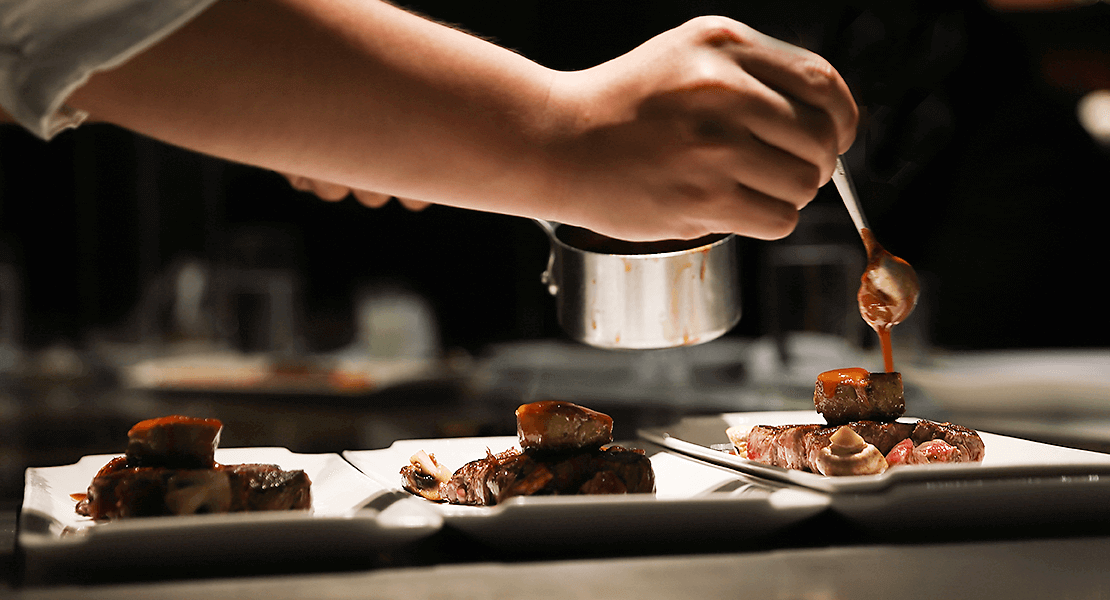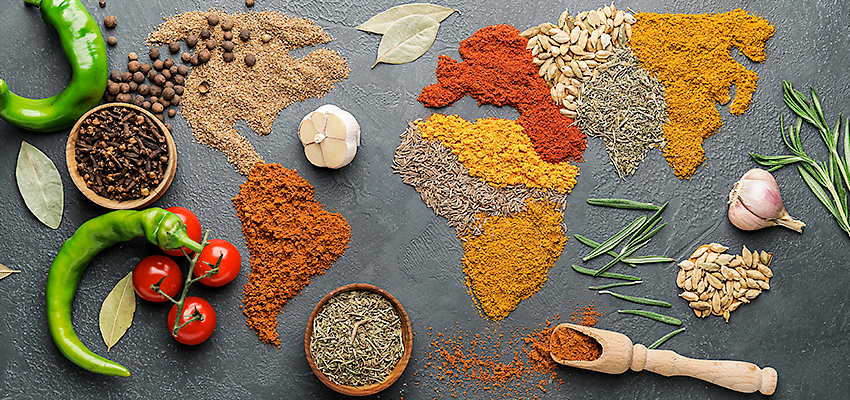
We’ve all experienced the joy of tasting a carefully thought-out dish with perfect flavour pairings.
From juicy strawberries dipped in chocolate to tender steak with creamy mashed potatoes—our favourite foods are often not just one individual taste, but two or more flavours together. But what is the science behind the magic? I spoke to Chef Andrew Bingham and Chef Ken Burns, both from Kalsec’s culinary team, to explore why flavour pairings work.
Balancing flavour is a science and an art. According to Chef Burns, working with ingredients that have contrasting flavour profiles balances out salty, umami, sweet, sour and bitter tastes to create a successful pairing. “This is a delicate balance,” said Chef Burns. “When we tip the flavour scale too far towards any one flavour profile, it can create an unpleasant eating experience.
But great chefs know how to hone flavours by adding ingredients with contrasting qualities to balance their dish.” When each element is perfectly balanced, they complement each other to elevate the eating experience. We learn of the contrasting balance of flavour at an early age. Chef Burns likes to use the example of the American lunch staple, peanut butter and jam sandwiches. He explains that jam on its own has an overly sweet taste profile. “To fix this, we need to level out the unbalanced sweetness by contrasting it with a salty, thick and fatty profile,” said Chef Burns. “What is better than peanut butter?” The net result is a delicious peanut butter and jam sandwich with a balanced salty, savoury and sweet flavour pairing.
Of course, Kalsec chefs and food scientists use both the senses and science when developing flavours.
“Smell and taste are, in fact, but a single sense whose laboratory is the mouth and whose chimney is the nose.”
—J. A. Brillat-Savarin, 1885
Chef Bingham believes pairings involve two or more complementary ingredients that can share key aroma components: the flavour and aroma signature. “The chemical composition of an aromatic profile can actually be mapped via gas chromatography-mass spectrometry (GC-MS),” said Chef Bingham. “A flavour often contains dozens of single compound molecules that give a product its distinct taste. Some will enhance, and others will dampen specific flavour and aroma compounds when detected orthonasally and retronasally.”
Favourite Flavour Pairings
By Chef Andrew Bingham
Different foods and flavours often contain some of the same compounds, which explains why they pair together so well. Here are a few of my favourites:
Fennel and Black Pepper
Aromatic + Pungent
This delicious combination works particularly well in savoury sauces and cured meats. One amazing must-try is the Tuscan artisanal ingredient finocchiona (fennel), which dates back to the Middle Ages. Fennel was originally used instead of the expensive black pepper (Piper nigrum); however, nowadays they are used in combination. Adding chilli takes this flavour combination to another level, as the capsaicin in chilli is amplified by the volatile alkaloid piperine, which gives black pepper its pungency.
Colorado Chilli And Stout
Spicy + Aromatic + Malty
When tasting this flavour pairing, the chilli stimulates the pain receptors on the tongue, triggering the senses, while the stout brings deep and lingering chocolate and coffee notes for a multidimensional experience.
Orange, Chilli and Cinnamon
Sweet + Aromatic + Spicy
These three ingredients work in synergy to deliver an all-encompassing oral flavour sensation. Orange and cinnamon flavours are used across Europe; in Spain, rice pudding uses short grain rice and milk, enhanced with creamy citrus oils from oranges and sweet woody notes from cinnamon. The addition of chilli works to heighten both the orange and cinnamon, adding a third dimension to this classic pairing.

Global Taste Experiences
By Chef Ken Burns
Flavours from around the globe are now being enjoyed everywhere—not just the region in which they originated. For me, some of the most exciting flavour combinations are uniquely regional, developed to perfectly match a country’s culture, geography and climate. Here are some of my favourites.
Mexican Chamoy Sauce
Sweet + Sour + Spicy + Salty
If you have visited Mexico, it is highly probable that you drizzled a chamoy sauce over your fresh fruits (pineapple, mango, jicama and avocado), used it to cook vegetables (corn, zucchini or squash) or used it as a marinade for steak or pork. It is comprised of dried apricots, prunes and hibiscus flowers, lending both sweet and sour qualities. These flavours are balanced out with the spicy heat of chilli pepper powder. The sauce is brightened up and rounded out by adding more acidity (the sour component) from lime juice. Chamoy is an excellent option to elevate your fresh foods.
Thai Curry
Sweet + Umami + Heat + Sour
Thai chefs are experts on the dynamic flavours of a Thai curry sauce served with a protein of choice over rice. It receives its sweetness from coconut milk, umami notes from fish sauce, heat from the curry paste (dried chillis, spices and herbs) and is garnished with fresh lime juice to brighten the sauce with acidity or sour flavours. A great Thai curry pulls all our taste buds together, creating a lively eating experience.
UK Worcestershire Sauce
Sour + Sweet + Umami + Salty
In the UK, adding Worcestershire sauce to marinades, sauces, braises, stews, burgers and Bloody Marys is common practice. It is made up of sour flavours from vinegar and tamarind, balanced with sweetness from molasses. It also has anchovies, which round out the sauce with umami, savoury and salty flavour notes. Adding a splash of Worcestershire to your meal can be the secret ingredient that takes it from good to great!
Northern Africa Shakshuka and Harissa
Heat + Spice + Sour + Umami + Sweet
Families from Northern Africa share a breakfast staple known as Shakshuka. The meal has dynamic flavours that are all mixed together. A major flavour component in the dish is harissa sauce. It adds heat from the dried, roasted red peppers paired with spicy and earthy components from the blend of coriander, caraway, cumin and garlic. Harissa is tied together with bright lemon juice or vinegar components. These flavours accentuate the Shakshuka’s umami notes from puréed tomatoes and level out the sweetness from the red pepper.

Explaining why flavour pairings are successful (taste good) is no simple task. The answers are infinite and have both complex and simple routes. At Kalsec, we approach this from both culinary and scientific perspectives. Chefs rely on their training and culinary acumen to optimally pair ingredients, creating balanced flavours that maximize the consumer’s eating experience. Meanwhile, food scientists and chemists rely on gas chromatography to map flavour molecules—identifying which compounds give ingredients their unique taste and how they impact the sensory systems. It’s the combination of these two methods that helps us craft surprising pairings that delight the senses and excite the taste buds.